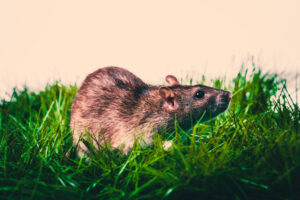 In the summer, fleas can find their way onto beloved pets and into the home. Fleas are not just annoying; they can lead to health concerns too. Itchy bites are not the only concern, as fleas can also carry diseases that can spread within a home. Signs of fleas to watch for can include scratching among pets, bites on humans, fleas in pet bedding or people bedding, finding black or red flecks on your pet or around the home, noticing dark flecks that seem to jump or move, or reddened skin or hair loss on your pet. You may notice one or more of these signs, but don’t panic. Fleas don’t have to take over your home in Georgia this summer when you take these recommended steps toward preventative measures.
In the summer, fleas can find their way onto beloved pets and into the home. Fleas are not just annoying; they can lead to health concerns too. Itchy bites are not the only concern, as fleas can also carry diseases that can spread within a home. Signs of fleas to watch for can include scratching among pets, bites on humans, fleas in pet bedding or people bedding, finding black or red flecks on your pet or around the home, noticing dark flecks that seem to jump or move, or reddened skin or hair loss on your pet. You may notice one or more of these signs, but don’t panic. Fleas don’t have to take over your home in Georgia this summer when you take these recommended steps toward preventative measures.
Check Pets Regularly
You may love your furry animals and feel like they are part of the family, but you don’t love the baggage they can bring with them, such as fleas. Checking pets regularly for signs of fleas is one of the first lines of defense you can have against fighting a flea infestation. As soon as you notice signs of fleas, it’s suggested that you speak to a vet as soon as possible and get treatment to kill fleas at the source.
Get Ahead of an Infestation
When there are signs of fleas in the home, such as bites on family members or pets that scratch nonstop, it is important to take steps to get ahead of an infestation.
Vacuuming carpets and mattresses and washing bedding can be one way to prevent the presence of fleas from becoming a full-blown infestation. Vacuuming carpeted areas can suck up flea eggs that will become larvae and attach to a host such as your pet. However, make note that vacuuming will not work once fleas have hatched, so at that point, it’s best to contact local pest experts to rid your home of these unwanted pests.
Treat Outside Areas
Usually, fleas find their way inside from the outside. For this reason, one of the first lines of defense can be to treat areas outside your home. Clean up any brush or old leaves from the yard that would make great places for fleas to hide. Check sandboxes, as sand fleas may be present. In general, treat the yard and keep everything picked up as best as possible.
Call Pest Force
No matter your best efforts, it’s still possible that flea infestations can get out of control quickly. When this happens, damage control is best left to the experts. Pest experts will thoroughly inspect and treat homes for pests such as fleas to be sure you are rid of them once and for all.
The pest professionals at Pest Force are standing by to address any pest concerns in or around your home. Contact us today to schedule a consultation so you can have peace of mind that your home is pest free once again.
FAQs
Do Fleas Die In Winter?
Fleas can live in colder temperatures, as cold as 46 degrees. However, fleas may not die if temperatures drop below 46 degrees unless there are freezing temperatures for up to 5 days or more. When temperatures are between 46 degrees and 33 degrees, fleas can survive for anywhere from 10 to 20 days. Indoor fleas may also die in winter. Fleas prefer temperatures of 75 degrees or more. When it comes to flea eggs, when temperatures drop below 50 degrees, they may survive in their cocoon and stay that way for months until it warms up enough to hatch. However, no flea or eggs can survive freezing temperatures.
What Time of Year Do We Have to Worry About Fleas?
Summer is an active time for fleas, but the peak of flea season is in fall, including the months of September, October, and November. In fact, flea infestations on pets, including cats and dogs, are 70% higher in the fall than it is in spring. In most places, fleas season begins in May and runs through the end of November.
Where Do Fleas Come From?
Fleas come from another infested animal. Once they live on one animal, it is very easy for them to spread to other animals in the house. Outside, fleas will wait in bushes or shady grass areas for a host to pass by. Fleas can live without a meal of blood for up to three months while they wait for a host.



